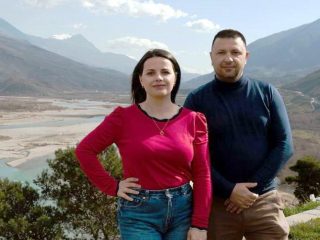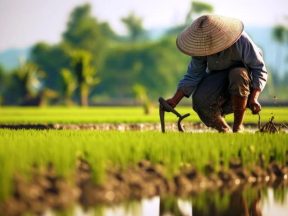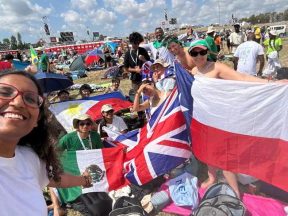Arts. Symbols of resistance.
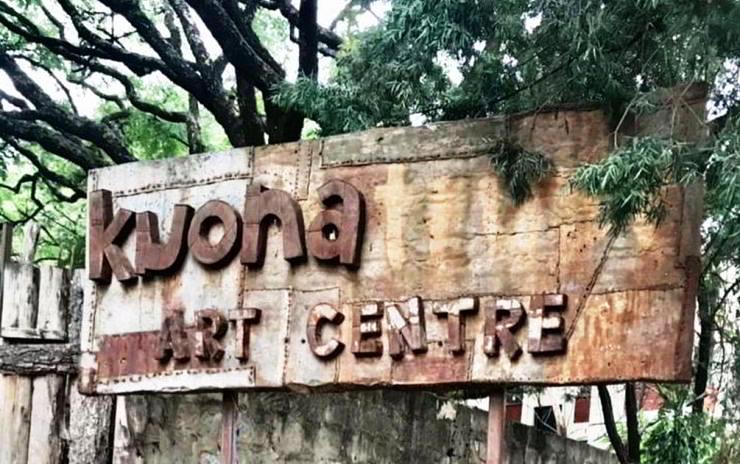
Video makers, sculptors, painters and creative Sudanese have taken part in the civil society protests of recent years, but after the outbreak of the conflict they had to leave. In Nairobi they have enriched an active and supportive community of artists. We met some of them at the Kuona Artists Collective.
Yassir Ali Mohammed is part of the Kuona Artists Collective and works at the eponymous visual arts centre, in a central neighbourhood of Nairobi, but on an internal street, where it feels like being in the countryside. The centre is a courtyard bounded by containers, each of which is the studio of one or more artists. African painters and sculptors of different nationalities produce works using different techniques and materials. The sculptures, which capture the attention of visitors right from the entrance gate, are exhibited in the courtyard. The recycled ones are particularly interesting. It is a fascinating place, where you can breathe experimentation and beauty.
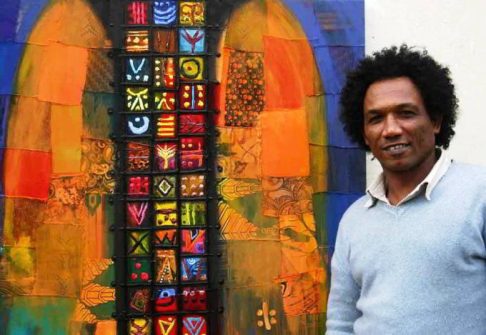
One of the paintings of Yassir Ali Mohammed “Windows of my Soul” File swm
The paintings that Yassir has exhibited on the walls of his studio are magnetic. Many have dark backgrounds divided into countless squares that contain signs that recall ancient hieroglyphics and alphabets. It is difficult to take your eyes off them: “In my paintings, I have worked on the atmosphere of ancient Nubia in contemporary ways. I have used my love for Nubian motifs and symbols”, he says to describe them.
Yassir is Sudanese, originally from Nubia, the region that extends along the Nile, divided between northern Sudan and southern Egypt, the cradle of a civilization even older than that of the Pharaohs.
His attachment to his country and his roots is evident. “The themes and images I paint,” explains the artist, “are as varied as the techniques I use, yet they often pay homage to the richness of Sudan’s history and culture.” Yet Yassir has lived in Nairobi since 2004.
He graduated in art from the Department of Science and Technology at the University of Sudan in 1997 and, like many university students, he became involved with opposition movements. He did not feel free to express himself either with his thoughts or with his works. At that time, in Khartoum, the Islamist regime of President Omar El-Bashir, deposed in April 2019 after 30 years in power, was still firmly in command. The country was closed and the rigidly interpreted rules of Islam were like a cloak that limited creativity.
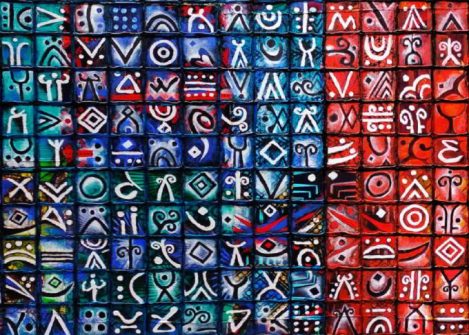
Yassir Ali Mohammed. “I have used my love for Nubian motifs and symbols”. File swm
Nairobi was the closest African city that offered stimuli, exchanges and a market. But very few Sudanese artists had moved there. Until 2023, when many had to reach Yassir to escape the violence of the conflict that has been devastating the country since then. The war pits the two main actors – the national army (SAF) and the militias of the Rapid Response Forces (RSF) – against each other and in more than two years, it has caused one of the worst humanitarian crises on the planet.
“Until the war broke out, here in Nairobi, there were only four of us – says Yassir. Now there are at least thirty of us. And then there are the photographers, the sculptors, the musicians, the filmmakers”.
A community that, generally speaking, formed bonds during the years of art school and actively participated in the popular movement that led to the fall of the Islamist regime. Yassir says: “During the months of the revolution, at least 4,000 posters were produced and circulated online to support the popular movement, call for demonstrations and distribute slogans. Some were printed during the phase of Prime Minister Abdalla Hamdok’s civil government and an exhibition was organized in Khartoum, in memory of their contribution to the revolution.”
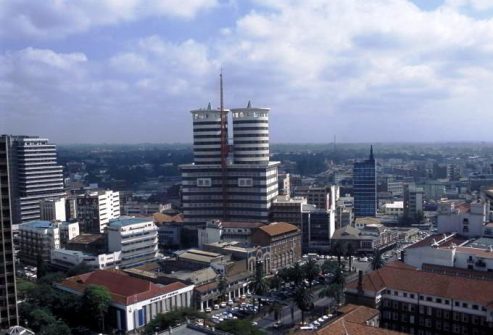
View of Nairobi. “There are at least thirty of us: photographers, sculptors, musicians and filmmakers”. File swm
Painters, sculptors, musicians, singers, photographers, filmmakers, and street artists have given voice and colour to the hopes for change in the country. Now, in exile, it is natural for them to form collectives, organise exhibitions and multicultural activities, support each other for the needs of daily life and to help those trapped by the war. They do it not only in Nairobi, but also in Cairo, Kampala and in Arab countries or wherever they have found refuge.
Solidarity and different ways of speaking about the war
In Nairobi, group exhibitions have been an important part of the conferences and symposiums on the situation in the country. The visual part of the analysis, with its immediate impact, is often more effective than that of words and testimonies themselves. So much so that even reports on the situation in Sudan often use photos of works of art rather than those of suffering victims, observes Ahmed Elzobier, a human rights activist and collaborator with Amnesty International.
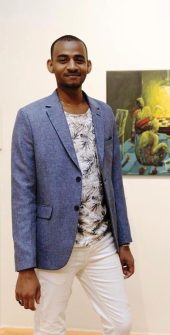
Riahiem Shadad is an art curator. He owned an art gallery in Khartoum. “Nairobi was kind and welcoming”. Photo: Laura M. Lombardía
The power of visual art in communicating complex situations is now rooted and widespread, so much so that in April 2024, to commemorate the first anniversary of the outbreak of the war, the Kenyan section of Amnesty International, in collaboration with the organizations Sudan Democracy First Group (Sfdg) and International Film Festival, organized an exhibition of works by Sudanese artists entitled Brushstroke of Resilience: A Year of Reflections and Memories from Sudan. There was also a practical purpose, effectively summarized in the concept of “The Art of Aid”.
The painter Omayma Gutabi, director of Sdfg and curator of the initiative, intended to raise funds to support community kitchens, which, with a few thousand dollars, fed, and are still feeding, hundreds of people in areas unreachable by international aid, where hunger was now a widespread experience. Fundraising to support the exhausted population in conflict zones is almost a constant in the activities of Sudanese
artists, not only in Nairobi.
A second home in Kenya
But in Nairobi it also seems to have been easier than elsewhere to fit into the vibrant artistic world of the city and express one’s needs.
For Rahiem Shadad, a young cultural operator, curator and manager of the Downtown Gallery in Khartoum that promoted contemporary Sudanese visual art, “Nairobi was kind and welcoming, I managed
to settle in really quickly”.
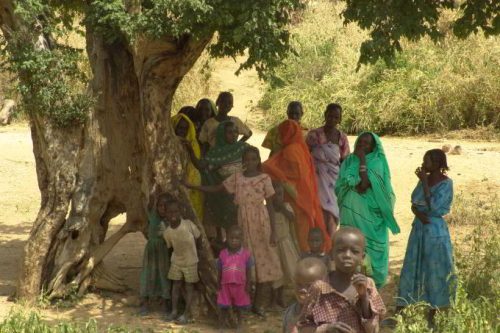
There are more than 11 million refugees, and the risk of famine in 14 areas of Sudan. File swm
The hospitable environment has also been conducive to solidarity. One example among others. The Sudanese artistic community of the city has contributed to the support of the program, The Rest Residency. A sort of “virtual residence” that has distributed concrete aid to new arrivals, organised English language courses and provided contacts to facilitate the integration and the beginning of artistic production in the host country.In August 2024, 21 artists from The Rest Residency exhibited the works of six months of collective and individual work at the Circle Art Gallery, which aims to promote the visual art of East Africa. An interesting context is in a well-known gallery in the city. Curator and director of the initiative, Rahiem Shadad, described its meaning unequivocally: “With more than 11 million refugees and the risk of famine in 14 areas of Sudan, this exhibition represents a cry of protest from the Sudanese cultural sector towards the parties in conflict: lay down your weapons and put an end to the war immediately”. (The entrance of the Kuona Artists Collective – Photo: Courtesy KAC)
Bruna Sironi

